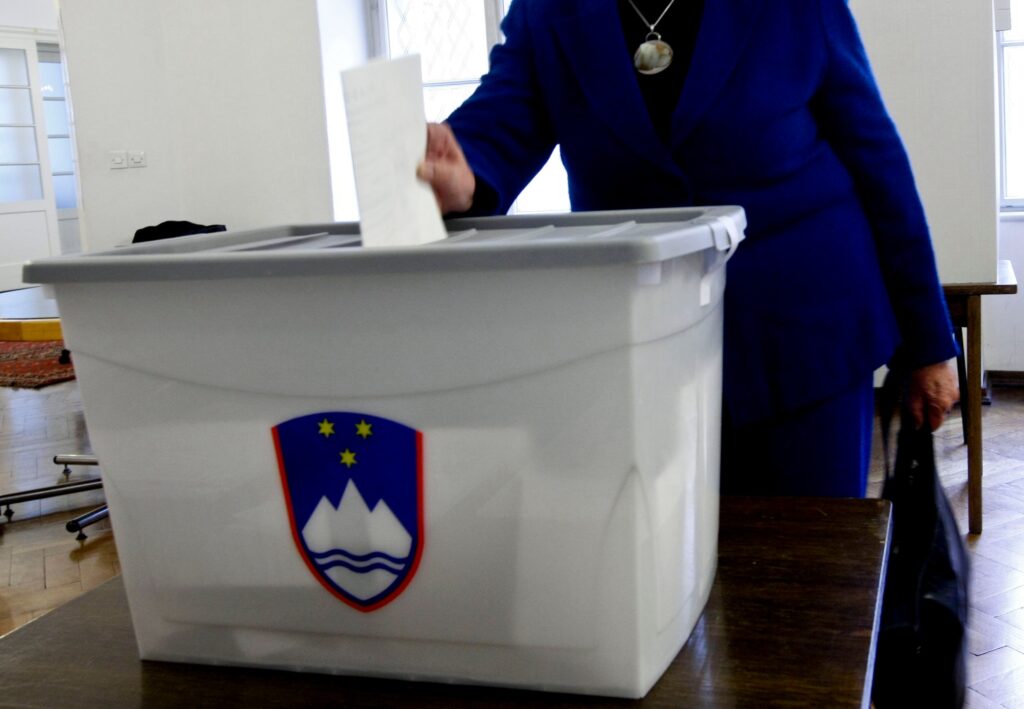According to the latest results of Parsifal’s public opinion poll, large growth in support has been recorded for the parties that are in favour of cooperation and integration in a development-oriented coalition. These results indicate that a good part of the participants in the survey find it important that the party which they will vote for would act constructively in the National Assembly. The left-wing parties, which deliberately operate in an exclusionary manner, did not record any noteworthy growth in support. The Slovenian Democratic Party still has the highest support among all political parties.
According to the latest public opinion poll conducted for Nova24tv by the Parsifal agency, most people would vote for the Slovenian Democratic Party (SDS) in the elections. The largest centre-right party in the country would be supported by 15.4 percent of the respondents. The SD party is in second place, with 10.8 percent of the votes, followed by the LMŠ party, which would get 7.7 percent of the votes, the Levica party would get 8.5 percent, the new movement Let’s Connect Slovenia would get 4.6 percent, SAB 4.1 percent, SNS 3.3 percent, NSi 2.7 percent, which is the same as the DeSUS party; Our Country would get 2.3 percent of the votes, Pirates 1.5 percent, SMC 1.1 percent, the Good State party 0.8, and Z.Dej 0.2 percent of the votes.
11.5 percent of the respondents would not support any of the parties previously mentioned, 8.4 percent of the respondents would not even go to the polls, and 0.6 percent of the respondents would vote for some other party, while 13.9 percent of the respondents do not know which party they would support. The share of undecided voters represents 34.4 percent of all respondents.
Among those who already know who they would vote for, 23.5 percent would vote for the SDS party, 16.5 percent for the SD party, 12.9 percent for the Levica party, 11.8 percent for the LMŠ party, 7.1 percent for the movement Let’s Connect Slovenia, 6.3 percent for the SAB party, 5 percent for the SNS party, 4.1 percent for the NSi party and the DeSUS party, 3.5 percent for Our Country, 1.1 percent for the Good State, and 0.2 percent of the respondents would vote for the Z.Dej party.
Among those who would surely take part in the elections, the SDS party would be supported by 20.3 percent of the respondents, SD by 15.3 percent, the Levica party by 8.6 percent, LMŠ by 7.6 percent, the Let’s Connect Slovenia movement 5.8 percent, SAB by 4.2 percent, NSi by 3 percent, Our Country by 2.5 percent, SNS by 2.4 percent, DeSUS also by 2.4 percent, SMC by 1.4 percent, Pirates also by 1.4 percent, the Good State by 0.3 percent, and Z.Dej by 0.2 percent. 6.2 percent of the respondents who would surely take part in the elections would not vote for any of the aforementioned parties, 17.6 percent do not know which party they would support, and 0.9 percent of the respondents would vote for some other party.
According to the results of the polls, the SNS party, the Let’s Connect Slovenian movement, the SMC party, and Our Country party have all recorded a noticeable increase in support. All of these are smaller parties or groups of parties, which, however, were recognised by the respondents in the public opinion poll thanks to their constructive attitude and willingness to connect and work with others. This is also confirmed by the growing share of those who would surely take part in the upcoming elections – namely, 53 percent of all respondents are sure they will participate in the next election.
Support for the parties that want to be part of a development-oriented coalition
From the results, we can conclude that people have had enough of constant quarrelling and promises from parties about who they will not cooperate with under any circumstances. A parliamentary democracy requires cooperation, and the voters are well aware of that, as they do not see the need for everyday life in parliament to be reminiscent of telenovelas. After all, the temple of democracy is dedicated to the common search for the best possible solutions for as many citizens as possible. Participation in a development-oriented coalition is one such solution.
The survey, which was conducted between the 30th of August and the 2nd of September, included 719 respondents, of which 50 percent were women, and 50 percent were men. The average age of the participants is 52.3 years, and the standard deviation is 16.6 years. The majority of the respondents are from the oldest age group (44.2 percent), a slightly smaller number of participants belong to the middle age group (37.4 percent), and the smallest number of respondents is from the youngest age group (18.4 percent). The majority of the respondents have completed high school (32.1 percent), followed by those with completed high education or higher (26.8 percent), 22.2 percent of respondents have finished vocational school, and 18.9 percent have either only completed or have not completed primary school. The majority of the respondents currently reside in a small village or hamlet (53.2 percent), followed by those who live in the city (29.0 percent) or a smaller town (17.8 percent). Most of the respondents are from the central region (24.2 percent), followed by Podravska (15.8 percent) and Savinjska region (12.4 percent).
Ivan Šokić


